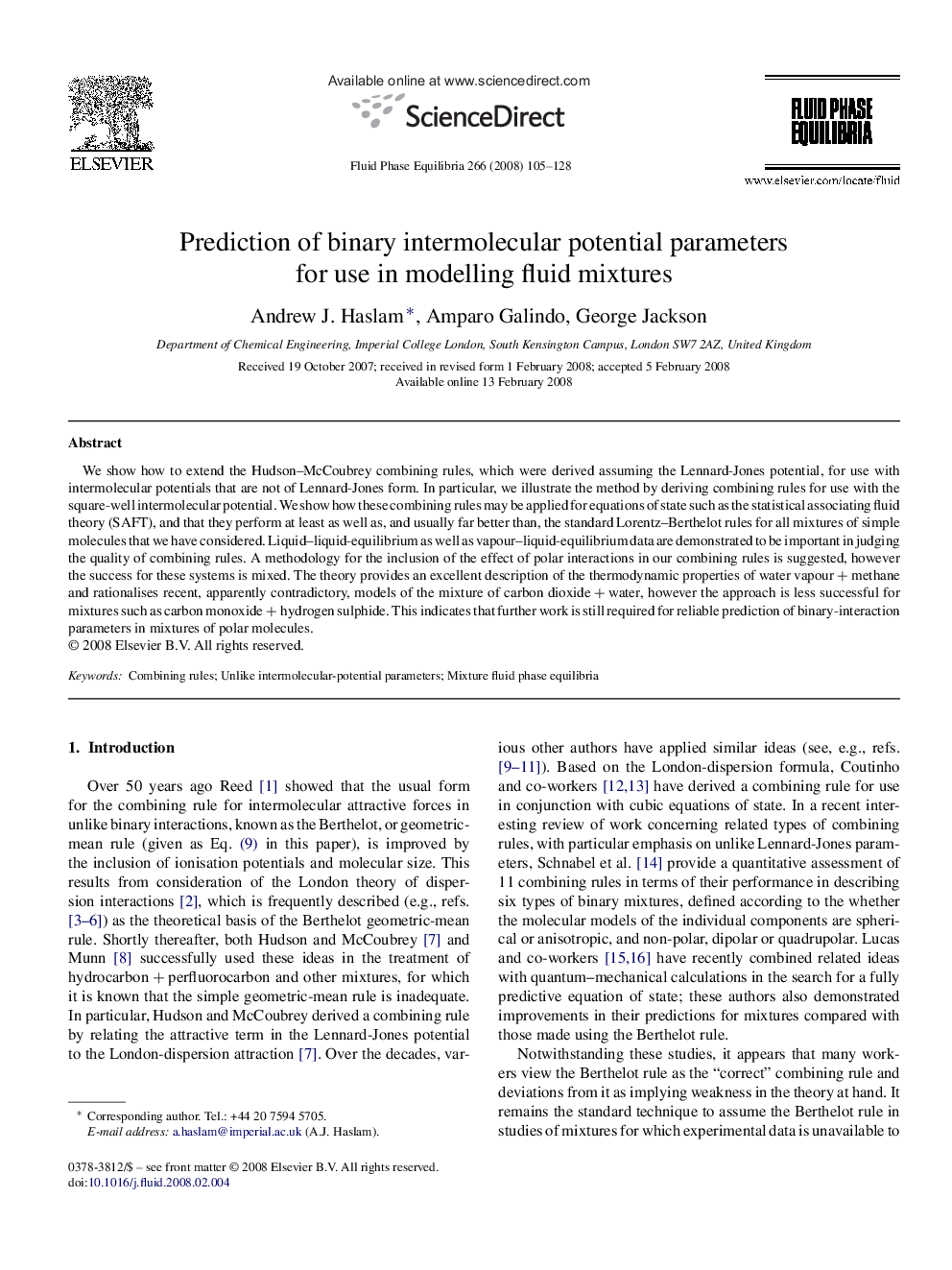| Article ID | Journal | Published Year | Pages | File Type |
|---|---|---|---|---|
| 204065 | Fluid Phase Equilibria | 2008 | 24 Pages |
We show how to extend the Hudson–McCoubrey combining rules, which were derived assuming the Lennard-Jones potential, for use with intermolecular potentials that are not of Lennard-Jones form. In particular, we illustrate the method by deriving combining rules for use with the square-well intermolecular potential. We show how these combining rules may be applied for equations of state such as the statistical associating fluid theory (SAFT), and that they perform at least as well as, and usually far better than, the standard Lorentz–Berthelot rules for all mixtures of simple molecules that we have considered. Liquid–liquid-equilibrium as well as vapour–liquid-equilibrium data are demonstrated to be important in judging the quality of combining rules. A methodology for the inclusion of the effect of polar interactions in our combining rules is suggested, however the success for these systems is mixed. The theory provides an excellent description of the thermodynamic properties of water vapour+methanevapour+methane and rationalises recent, apparently contradictory, models of the mixture of carbon dioxide+waterdioxide+water, however the approach is less successful for mixtures such as carbon monoxide+hydrogenmonoxide+hydrogen sulphide. This indicates that further work is still required for reliable prediction of binary-interaction parameters in mixtures of polar molecules.
